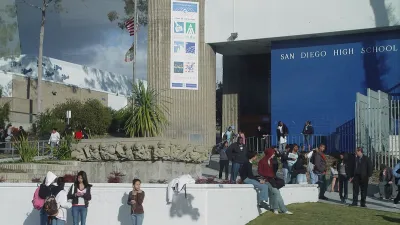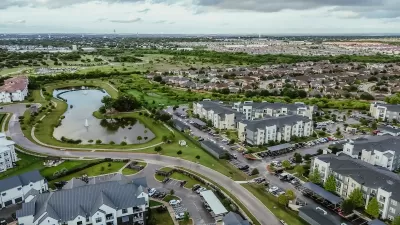San Diego invested $1.5 billion in tax increment to increase housing in its downtown but displaced affordable housing with unaffordable housing. Housing planner, developer and advocate, Murtaza Baxamusa gives some answers and asks some questions.

Between 2000 and 2015, the number of housing units in San Diego's downtown doubled—from about 12,000 to 25,000—and so did rents. More than half of downtown's renters spend above 30 percent of their income on rent—the common benchmark for "unaffordable." Ironically, the vacancy rate has doubled but it is not attributable to a lack of renters. Rather it is attributable mostly to an increase in the number of vacation homes. Thus, it appears that the public resources that went into the downtown redevelopment project, in large measure, have subsidized luxury residences for the well-heeled and reduced downtown San Diego's affordable housing stock. On the other hand, median rent in the rest of the city has caught up to downtown so that that now the downtown area isn't significantly more expensive than downtown. However, however even that fact bodes poorly for non-wealthy renters who aren't just being driven from downtown but have fewer housing options anywhere in the city. Baxamusa cites additional data and includes charts to further demonstrate the disturbing correlation. He concludes:
The intent of this post is to spur a discussion of the affordable housing stock in downtown, and particularly to focus on why new construction is not keeping pace with the removal of the affordable housing stock in San Diego.
For more of Baxamusa's analysis, please read the source article.
FULL STORY: How San Diego’s downtown housing supply boom is making rent less affordable

Planetizen Federal Action Tracker
A weekly monitor of how Trump’s orders and actions are impacting planners and planning in America.

San Francisco's School District Spent $105M To Build Affordable Housing for Teachers — And That's Just the Beginning
SFUSD joins a growing list of school districts using their land holdings to address housing affordability challenges faced by their own employees.

The Tiny, Adorable $7,000 Car Turning Japan Onto EVs
The single seat Mibot charges from a regular plug as quickly as an iPad, and is about half the price of an average EV.

Seattle's Plan for Adopting Driverless Cars
Equity, safety, accessibility and affordability are front of mind as the city prepares for robotaxis and other autonomous vehicles.

As Trump Phases Out FEMA, Is It Time to Flee the Floodplains?
With less federal funding available for disaster relief efforts, the need to relocate at-risk communities is more urgent than ever.

With Protected Lanes, 460% More People Commute by Bike
For those needing more ammo, more data proving what we already knew is here.
Urban Design for Planners 1: Software Tools
This six-course series explores essential urban design concepts using open source software and equips planners with the tools they need to participate fully in the urban design process.
Planning for Universal Design
Learn the tools for implementing Universal Design in planning regulations.
Smith Gee Studio
City of Charlotte
City of Camden Redevelopment Agency
City of Astoria
Transportation Research & Education Center (TREC) at Portland State University
US High Speed Rail Association
City of Camden Redevelopment Agency
Municipality of Princeton (NJ)





























